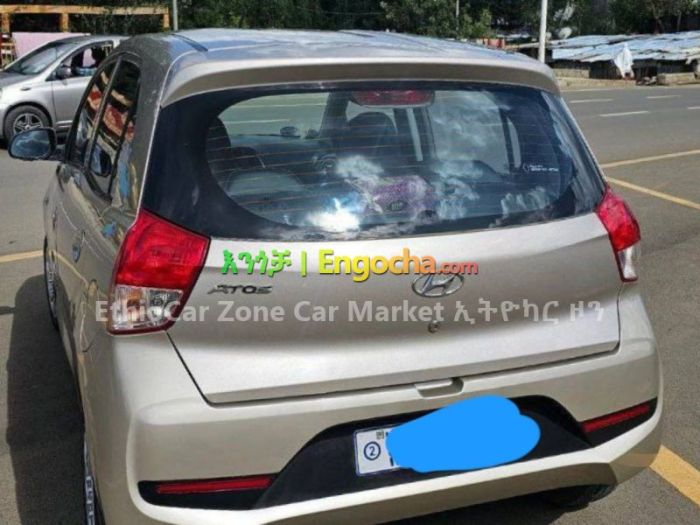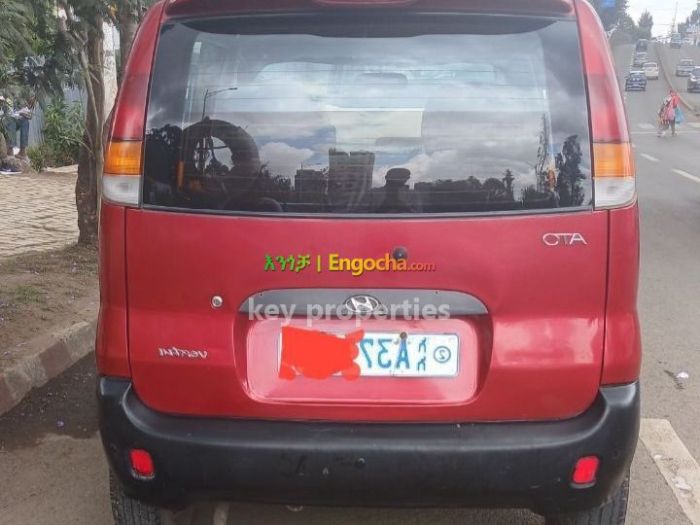AtoZ New Automobile Car Prices in Ethiopia
The Ethiopian Automobile Market: A Comprehensive Overview
Atoz new automobile car price in ethiopia – The Ethiopian automobile market is experiencing significant growth, driven by a burgeoning middle class and increasing infrastructure development. While still relatively small compared to more established markets, it presents a dynamic landscape with diverse players and unique challenges. This analysis delves into the various facets of the Ethiopian new car market, exploring pricing, consumer preferences, and future trends.
The Current State of the Ethiopian New Car Market
Ethiopia’s new car market is characterized by a mix of established international brands and local distributors. Growth is influenced by factors such as government policies, economic conditions, and the availability of financing options. Competition is keen, with various brands vying for market share. The market is also shaped by import regulations and associated costs, significantly impacting the final prices of vehicles.
Major Players in the Ethiopian Automobile Industry
Several major players dominate the Ethiopian automobile market. These include established international brands like Toyota, Hyundai, and Suzuki, often represented through local dealerships and importers. The market also features a presence of Chinese automobile manufacturers, who are increasingly competitive due to their affordability and varied model offerings. The precise market share of each player fluctuates depending on various factors like import quotas and consumer demand.
Factors Influencing Car Prices in Ethiopia
Car prices in Ethiopia are influenced by a complex interplay of factors. Import duties and taxes levied by the government significantly inflate the final cost to consumers. Currency exchange rates play a crucial role, as most vehicles are imported, meaning fluctuations directly affect the landed cost. Furthermore, logistical challenges and transportation costs also contribute to the overall price.
Market Share of Different Car Brands in Ethiopia

Source: engocha.com
The following table provides an estimated comparison of the market share held by various car brands in Ethiopia. Note that these figures are approximate and may vary depending on the data source and reporting period.
| Brand | Estimated Market Share (%) | Strengths | Weaknesses |
|---|---|---|---|
| Toyota | 30-35 | Strong brand reputation, reliable vehicles, wide model range | Higher price point compared to some competitors |
| Hyundai | 15-20 | Competitive pricing, modern designs, good fuel efficiency | Perceived reliability concerns in some segments |
| Suzuki | 10-15 | Affordable, fuel-efficient models, strong presence in the smaller car segment | Limited range of higher-end models |
| Other Brands (Chinese, etc.) | 40-45 | Diverse model range, competitive pricing | Varying levels of brand recognition and perceived reliability |
Price Ranges of A-Z Automobiles in Ethiopia
Determining precise pricing for all automobile models in Ethiopia is challenging due to fluctuating market conditions and varying dealer markups. However, the following provides a general overview of price ranges for various car models, categorized by brand and model. Price differences within the same brand often stem from features, engine size, and year of manufacture.
- Toyota: The price range for Toyota vehicles is generally higher than other brands, reflecting its strong reputation for reliability. A basic Corolla model might start around $20,000, while a Land Cruiser could exceed $100,000. Price differences depend on the model year, trim level, and features.
- Hyundai: Hyundai offers more competitive pricing. Entry-level models can start as low as $12,000, while more advanced models could reach $25,000. Variations in price within the brand are primarily driven by engine size, features, and trim levels.
- Suzuki: Suzuki typically caters to the budget-conscious consumer, with models starting around $8,000 and reaching up to $15,000 depending on the model and features. The price differences are often tied to engine capacity and added features.
- Other Brands: Chinese brands offer a broad spectrum of prices, often undercutting established brands. Prices can range from $7,000 for basic models to $20,000 for more advanced offerings.
Factors Affecting Car Prices
Several external factors significantly influence the cost of automobiles in Ethiopia. Import regulations, currency fluctuations, and the comparative pricing of similar models from different manufacturers all play crucial roles in determining final prices.
Impact of Import Regulations on Car Prices
Strict import regulations and high tariffs imposed by the Ethiopian government contribute significantly to the inflated cost of vehicles. These regulations are designed to protect local industries and generate revenue but often lead to higher prices for consumers.
Effect of Currency Fluctuations on Imported Vehicle Costs
The Ethiopian Birr’s value against major currencies like the US dollar directly affects the cost of imported vehicles. A weakening Birr leads to increased import costs, ultimately raising the price of cars for consumers. Conversely, a strengthening Birr can potentially lead to lower prices.
Comparative Pricing of Similar Car Models
Comparing similar car models from different manufacturers reveals significant price variations. These differences can stem from brand reputation, features, perceived quality, and manufacturing costs. Consumers often weigh these factors when making purchasing decisions.
Relationship Between Car Price and Fuel Efficiency
While not always a direct correlation, there is a general trend where more fuel-efficient vehicles, particularly those with smaller engines, tend to be less expensive. This is because of lower manufacturing costs and potentially lower import duties on smaller engine vehicles. However, other factors like features and brand also influence pricing.
Consumer Preferences and Buying Trends
Understanding consumer preferences is vital for assessing the Ethiopian automobile market. Popular models, preferred features, financing options, and the typical buying process all contribute to the overall market dynamics.
Popular Car Models Among Ethiopian Consumers
Toyota models, especially the Corolla and Hilux, consistently rank among the most popular choices due to their reliability and resale value. Affordable models from Chinese manufacturers are also gaining traction due to their competitive pricing. Smaller, fuel-efficient vehicles are generally favored due to the cost of fuel.
Preferred Car Features and Specifications
Ethiopian consumers often prioritize features such as fuel efficiency, durability, and ground clearance suitable for the country’s varied terrains. Air conditioning is a highly sought-after feature, given the climate. Safety features, while increasingly important, are often secondary to other considerations due to budget constraints.
Impact of Financing Options on Car Purchasing Decisions
The availability of financing options, such as car loans and leasing, significantly influences car purchasing decisions. Access to credit allows more consumers to afford vehicles, expanding the market. However, high-interest rates can make financing less accessible to some.
Hypothetical Buying Process of a Typical Ethiopian Car Buyer, Atoz new automobile car price in ethiopia
A typical Ethiopian car buyer might start by researching different models online and visiting dealerships. They would compare prices, features, and fuel efficiency. Financing options would be explored, and negotiations with dealerships would be common. The final decision would likely involve balancing desired features with budget constraints and available financing.
Future Trends in the Ethiopian Automobile Market: Atoz New Automobile Car Price In Ethiopia

Source: engocha.com
Predicting future trends requires considering government policies, consumer demand, and overall economic growth. The following explores potential developments in the Ethiopian automobile market.
Potential Impact of Government Policies on Car Prices
Government policies regarding import duties and taxes will significantly impact future car prices. Any reduction in tariffs could potentially lower prices, increasing market accessibility. Conversely, increased taxes could further inflate prices.
Likely Trends in Consumer Demand for New Vehicles
Consumer demand is expected to continue growing, driven by economic expansion and a growing middle class. Demand for fuel-efficient and durable vehicles will likely remain strong, reflecting both economic and environmental considerations.
Anticipated Growth of the Ethiopian Automobile Market
The Ethiopian automobile market is projected to experience sustained growth in the coming years. Infrastructure development and economic progress will be key drivers of this expansion. However, the rate of growth will depend on factors like economic stability and government policies.
Possible Future Price Projection for Specific Car Models
Predicting precise future prices is speculative. However, considering current trends, a basic model from a Chinese manufacturer might remain relatively affordable, potentially increasing slightly due to inflation. Conversely, high-end models from established brands could see more significant price increases due to import costs and currency fluctuations.
Illustrative Examples of Car Prices
The following examples illustrate the price range and features of different car models available in the Ethiopian market.
A Popular Model from a Major Brand
A mid-range Toyota Corolla, a popular choice, might feature a 1.6L engine, automatic transmission, air conditioning, and basic safety features. Its price could range from $20,000 to $25,000, depending on the year and specific features.
A Less Common, More Expensive Model
A luxury SUV like a Land Cruiser, often preferred for its off-road capabilities and durability, commands a significantly higher price, exceeding $100,000. Its high price reflects its advanced features, powerful engine, superior build quality, and higher import duties on such high-end vehicles.
Three Cars Representing Different Price Points
A low-end model could be a basic hatchback from a Chinese manufacturer, starting around $7,000. A mid-range option could be a Hyundai sedan, priced around $15,000. A high-end model would be a premium SUV like a Land Cruiser, priced above $100,000.
User Queries
What are the most common payment methods for purchasing a car in Ethiopia?
Common methods include cash payments, bank financing, and potentially financing through dealerships.
Are there any government incentives or subsidies available for car purchases in Ethiopia?
Determining the A-to-Z new automobile car prices in Ethiopia can be challenging due to fluctuating market conditions. For comparison, consider a similar model in another market; a new car has a sticker price of 26450, as seen on this website: a new car has a sricker price of 26450. Understanding this price point helps contextualize the Ethiopian market’s pricing, though regional differences will always exist.
This varies depending on current government policy; it’s advisable to check with relevant government agencies for the most up-to-date information.
Where can I find reliable information on used car prices in Ethiopia?
Online classifieds, local dealerships, and automotive publications are potential resources for used car pricing. Thorough research is always recommended.
What is the typical warranty offered on new cars in Ethiopia?
Warranty periods vary by manufacturer and model. Check the specific warranty details provided by the dealership or manufacturer.





















